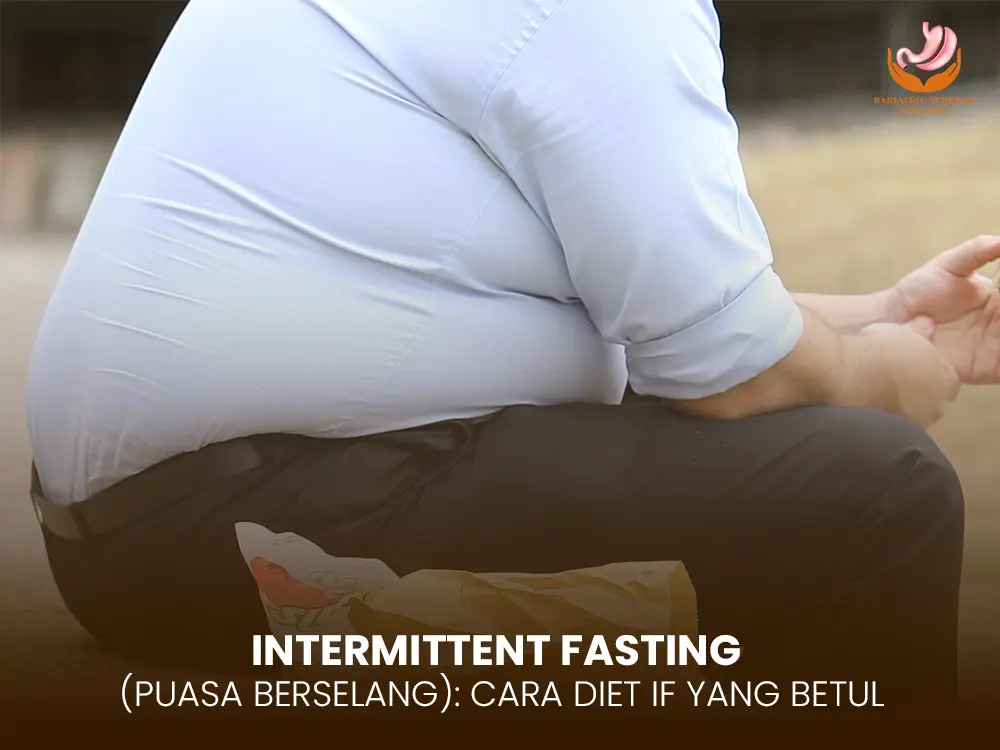Obesity is a rising health concern worldwide, and Malaysia is no exception. With lifestyle diseases such as diabetes, heart conditions, and joint issues linked to obesity, more individuals are turning to bariatric surgery for a healthier future. Among these surgical options, sleeve gastrectomy stands out as a preferred solution for sustainable weight loss. This article explores the ins and outs of sleeve gastrectomy Malaysia — from eligibility and procedure to recovery, benefits, and top treatment centers.
What is Sleeve Gastrectomy Malaysia?
Sleeve gastrectomy, also known as vertical sleeve gastrectomy (VSG), is a type of bariatric surgery designed to help patients lose weight by reducing the size of the stomach. About 75–80% of the stomach is removed during the procedure, leaving a banana-shaped pouch that holds much less food. This significantly reduces appetite and caloric intake while also influencing gut hormones that impact hunger and metabolism.
Why Choose Malaysia for Sleeve Gastrectomy?
Malaysia has rapidly gained recognition as one of the top destinations for bariatric surgery, attracting patients from across Asia, the Middle East, Australia, and even Europe. The country offers an appealing blend of advanced medical expertise, modern infrastructure, and cost-effectiveness—making it an ideal choice for sleeve gastrectomy.
Highly Skilled and Experienced Surgeons
Many bariatric surgeons in Malaysia are internationally trained in countries such as the UK, Australia, and the US, and hold board certifications from prestigious institutions.
These surgeons routinely perform sleeve gastrectomy procedures, ensuring high surgical success rates and low complication risks.
Continuous professional development and participation in global medical conferences keep them updated with the latest techniques and safety protocols.
World-Class Medical Facilities
Malaysia’s leading hospitals and specialized weight-loss surgery centers are equipped with cutting-edge laparoscopic and robotic surgical systems, allowing for minimally invasive procedures with faster recovery times.
Many hospitals are JCI (Joint Commission International) or MSQH (Malaysian Society for Quality in Health) accredited, reflecting their commitment to global healthcare standards.
Patient safety and hygiene protocols are on par with top medical centers worldwide.
Cost-Effective Without Compromising Quality
The cost of sleeve gastrectomy in Malaysia can be 40–70% lower than in the US, UK, or Australia, while offering comparable quality of care.
Lower living costs and government support for medical tourism help keep prices affordable for both domestic and international patients.
Many hospitals offer transparent, all-inclusive packages with no hidden fees.
Multilingual and Culturally Sensitive Care
Medical teams often speak English, Malay, Mandarin, and Tamil, ensuring clear communication with patients from various backgrounds.
Cultural awareness and dietary understanding help tailor post-surgery nutrition plans to suit individual preferences and religious requirements.
Comprehensive Medical Tourism Support
Malaysia’s thriving medical tourism sector offers seamless travel-to-treatment packages, including:
Airport pick-up and drop-off
Assistance with visas and travel arrangements
Comfortable hotel or serviced apartment stays near hospitals
Dedicated patient coordinators for a stress-free experience
Post-operative follow-up care is often built into the package, ensuring continuity of care even after returning home.
A Serene and Healing Environment
Malaysia’s warm climate, beautiful beaches, and tranquil landscapes provide a peaceful environment for post-surgery recovery.
Some patients choose to combine treatment with a short vacation, taking advantage of the country’s natural and cultural attractions once they are fit to travel.

Who is Eligible for Sleeve Gastrectomy Malaysia?
Not everyone qualifies for this surgery. Candidates typically include:
- Individuals with a Body Mass Index (BMI) over 40
- Those with a BMI over 35 and weight-related health issues like type 2 diabetes, sleep apnea, or hypertension
- Patients who have not achieved long-term weight loss through diet, exercise, or medication
- Adults between 18 and 65 years of age (in most cases)
Psychological readiness, commitment to lifestyle changes, and a supportive environment also influence eligibility.
The Procedure: What to Expect
Sleeve gastrectomy is usually performed laparoscopically, meaning it involves small incisions, a camera, and minimally invasive tools. Here’s a general overview:
- Anesthesia: General anesthesia is administered.
- Surgery Duration: The procedure typically takes 1–2 hours.
- Stomach Reduction: Approximately 75% of the stomach is removed.
- Hospital Stay: Patients stay for 2–4 days for monitoring and initial recovery.
This surgery does not involve intestinal rerouting, which minimizes nutritional deficiencies compared to gastric bypass.
Sleeve Gastrectomy Malaysia: Recovery Timeline
Recovery after sleeve gastrectomy is generally faster compared to more invasive bariatric procedures, but it still requires careful adherence to medical and dietary guidance. Each phase focuses on healing, adaptation, and long-term success.
Week 1–2: Initial Healing Phase
You will remain on a clear and full liquid diet to allow your stomach to heal without stress.
Pain and discomfort are managed with prescribed medications, and you may be encouraged to walk short distances to improve circulation and prevent blood clots.
Most patients can resume light activities such as gentle household chores within the first week, but strenuous exercise should be avoided.
Hydration is critical during this phase, as the reduced stomach size limits fluid intake.
Week 3–4: Soft Food Transition
You will begin transitioning from liquids to pureed and soft foods, such as blended soups, mashed vegetables, and smooth protein sources like yogurt.
Eating small, frequent meals (5–6 times per day) becomes the norm to ensure adequate nutrition while avoiding discomfort.
Energy levels start improving, and light exercise such as slow walking or gentle stretching is encouraged.
Week 5–8: Introduction of Solid Foods
Gradual reintroduction of soft, chewable proteins like fish, tender chicken, and steamed vegetables under your dietitian’s supervision.
Portion sizes remain small, usually a few ounces per meal, to avoid overfilling the stomach.
Patients begin adjusting to mindful eating habits—chewing thoroughly, eating slowly, and stopping at the first sign of fullness.
3–6 Months: Rapid Weight Loss Period
This is when substantial weight loss occurs, with most patients losing a significant portion of excess weight.
Physical activity becomes a bigger part of the daily routine, including resistance training to maintain muscle mass.
Energy levels are often noticeably higher, and many obesity-related conditions, such as high blood pressure or type 2 diabetes, begin to improve or resolve.
6–12 Months: Lifestyle Stabilization
By this stage, most patients achieve 50–70% excess weight loss if they adhere to dietary and exercise guidelines.
Focus shifts toward long-term weight maintenance, with an emphasis on balanced meals rich in lean protein, vegetables, and healthy fats.
Vitamin and mineral supplementation continues for life to prevent nutritional deficiencies.
Beyond 12 Months: Long-Term Maintenance
Weight loss typically stabilizes, and the goal becomes maintaining the achieved weight.
Continued follow-up with a healthcare team ensures nutrient levels remain healthy and helps address any late complications such as reflux or weight regain.
Regular Follow-Up Appointments
Consistent follow-up visits with your surgeon, dietitian, and possibly a psychologist are essential. These appointments monitor:
Vitamin and mineral levels
Wound healing progress
Dietary adherence and portion control
Emotional adjustment to lifestyle changes
Benefits of Sleeve Gastrectomy Malaysia
Choosing sleeve gastrectomy can result in:
- Significant and sustained weight loss
- Improvement or resolution of diabetes, hypertension, and joint issues
- Enhanced mobility and physical fitness
- Lower risk of cardiovascular disease
- Improved mental health and self-confidence
- Minimal risk of dumping syndrome (common in other bariatric surgeries)
Sleeve Gastrectomy Malaysia: Possible Risks and Side Effects
While sleeve gastrectomy is generally safe, it’s not without risks. Some possible side effects include:
- Nausea or acid reflux
- Nutritional deficiencies (vitamins B12, D, calcium, and iron)
- Surgical complications like leakage or bleeding (rare but serious)
- Weight regain if dietary guidelines aren’t followed
This is why selecting an experienced surgical team and adhering to post-op guidance are critical for long-term success.
Cost of Sleeve Gastrectomy Malaysia
One of Malaysia’s major draws is affordability. Here’s a cost overview:
Service | Estimated Cost (MYR) |
Sleeve Gastrectomy Surgery | 25,000 – 45,000 |
Pre-op Consultations | 500 – 1,200 |
Post-op Follow-ups (Annual) | 800 – 1,500 |
Hospital Stay | Usually included |
Some packages may bundle accommodation, nutritionist sessions, and transport.
Life After Sleeve Gastrectomy Malaysia
Surgery is only the first step. Long-term success depends on:
- Regular exercise (after clearance)
- Adherence to a high-protein, low-carb diet
- Taking prescribed supplements
- Attending follow-up appointments
- Seeking support groups or counseling
Many patients report better emotional health, increased activity levels, and improved social relationships post-surgery.
Sleeve Gastrectomy Malaysia: FAQs
1. How much weight can I lose with sleeve gastrectomy Malaysia?
Most patients lose 50–70% of their excess weight within 12–18 months of surgery, especially with proper lifestyle changes.
2. Is the procedure reversible?
No, sleeve gastrectomy is permanent. The portion of the stomach removed cannot be restored.
3. Will I need to take vitamins for life?
Yes, vitamin and mineral supplementation is usually required to prevent deficiencies after surgery.
4. Can I get pregnant after sleeve gastrectomy?
Yes, but it’s advisable to wait 12–18 months post-surgery to ensure stable weight and nutrient absorption.
5. Does insurance cover sleeve gastrectomy in Malaysia?
Coverage depends on your policy. Some private insurance plans may cover bariatric surgery if medically necessary.
6. How long is the recovery time after sleeve gastrectomy?
Most patients can return to light activities within 1–2 weeks, but full recovery and adaptation to new eating habits may take a few months.
7. What foods can I eat after surgery?
Patients start with a liquid diet, then transition to pureed foods, soft foods, and eventually small portions of solid meals. Portion control is essential.
8. Will I experience hair loss after sleeve gastrectomy Malaysia?
Some patients may notice temporary hair thinning due to rapid weight loss and nutritional changes. Adequate protein intake and supplements help reduce this.
9. Are there any long-term risks of sleeve gastrectomy Malaysia?
Possible long-term risks include acid reflux, nutrient deficiencies, and weight regain if lifestyle changes are not maintained.
10. How do I prepare for sleeve gastrectomy?
Preparation often includes medical tests, nutritional counseling, and a pre-surgery diet to shrink the liver and improve safety during the operation.
Conclusion
Opting for sleeve gastrectomy Malaysia offers an effective, affordable, and safe solution for long-term weight management. With skilled surgeons, modern facilities, and a supportive healthcare system, patients can achieve both health improvement and life transformation. As always, consult with a certified bariatric specialist to explore your options and make informed decisions.


